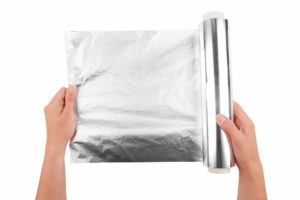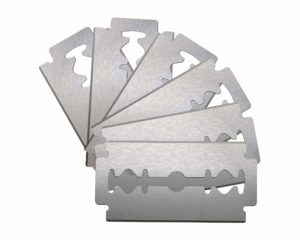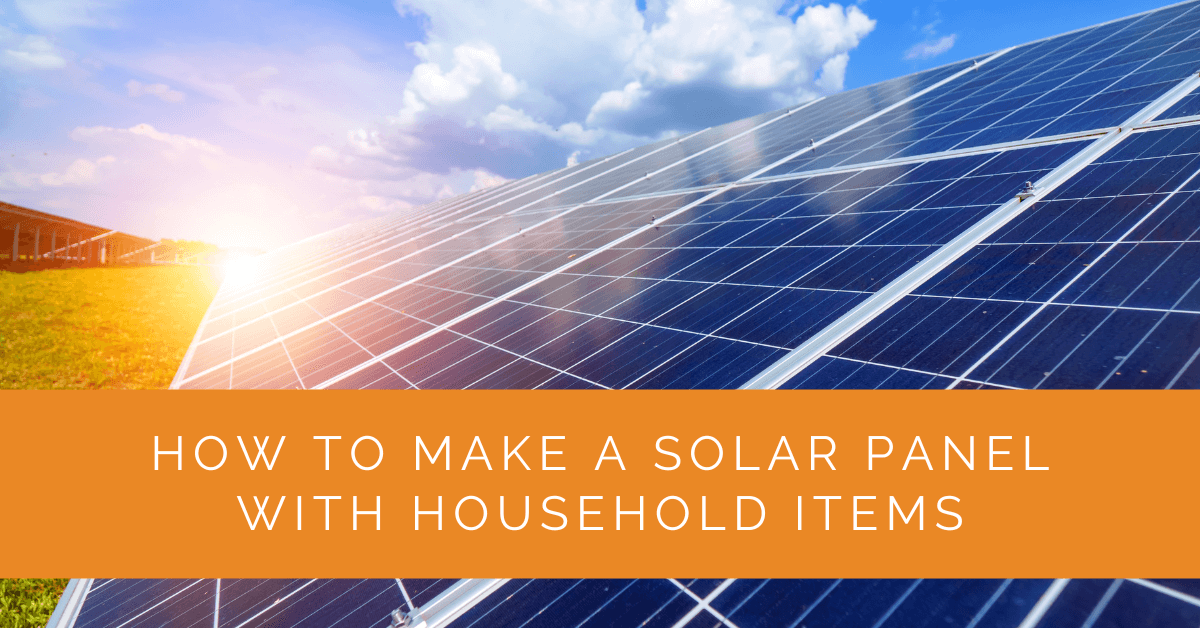Solar energy is becoming an increasingly popular source of renewable energy. While professional solar panel installations are the most common way to harness solar power, did you know you can create your solar panel using simple household items? This article will guide you through making a solar panel using CDs, aluminum foil, and knife blades. Let’s dive in and explore the exciting world of DIY solar panels!
Contents
Materials Needed
To get started with your homemade solar panel project, gather the following materials:
- CDs (unused and reflective)
- Aluminum foil
- Knife blades
- Copper wire
- Solder
- Silicon adhesive
- Voltmeter
- Insulated wire
- Base material (such as glass or wood)
Understanding Solar Energy
Before we begin the construction process, let’s take a moment to understand the basics of solar energy. Solar panels, also known as solar cells, convert sunlight into electricity. Photovoltaic (PV) cells are the heart of a solar panel, capturing photons from sunlight and producing a flow of electrons. These electrons create an electrical current that can power various devices.
Making a Solar Panel with CD’s

Creating a solar panel using CDs is a fascinating DIY project that allows you to repurpose unused discs and harness solar energy. Following these detailed steps, you can construct a functional solar panel using available household items.
Step 1: Gathering Materials
Before you begin, ensure you have all the necessary materials at hand. Here’s what you’ll need:
- CDs: Choose unused CDs with a reflective surface. The reflective layer is crucial for capturing sunlight effectively.
- Aluminum foil: This will be used to enhance the reflective properties of the CDs.
- Copper wire: Select a suitable gauge of copper wire for interconnecting the CDs.
- Solder: Use solder to create secure and durable connections between the wires.
- Silicon adhesive: This adhesive will help attach the aluminum foil to the CDs.
- Base material: Prepare a sturdy base material to support and hold the CDs together. This could be glass, wood, or any other stable surface.
Step 2: Preparing the CDs
To ensure optimal performance, it’s important to prepare the CDs properly before assembly. Follow these steps:
- Clean the CDs: Thoroughly clean the CDs to remove any dust, fingerprints, or smudges. A clean surface will maximize light reflection.
- Removing labels: Gently peel off any labels or stickers present on the CDs. These can interfere with the reflective surface, so ensure they are completely removed.
- Smoothing the surface: Use a soft cloth to gently buff the CDs, ensuring a smooth and even surface.
Step 3: Attaching Aluminum Foil
Attaching aluminum foil to the CDs will significantly enhance their reflectivity. Follow these instructions:
- Cut aluminum foil strips: Cut strips of aluminum foil slightly larger than the surface area of the CDs.
- Applying silicon adhesive: Apply a thin layer of silicon adhesive onto the reflective side of the CDs.
- Affixing the aluminum foil: Carefully press the aluminum foil onto the adhesive, ensuring a smooth and wrinkle-free attachment. Smooth out any air bubbles or wrinkles for a uniform reflective surface.
Step 4: Assembling the Solar Panel
Now that the CDs are prepared, it’s time to assemble them into a functional solar panel:
- Arranging the CDs: Place the prepared CDs in a series, with the aluminum foil sides facing each other. The reflective surfaces should be in contact to maximize light reflection.
- Interconnecting with copper wire: Use copper wire to connect one CD’s positive terminal to the next CD’s negative terminal. Create a chain-like arrangement by repeating this pattern until all the CDs are connected.
- Soldering the connections: To ensure secure and reliable connections, solder the interconnections between the CDs. This will improve conductivity and durability.
Once the assembly is complete, you have a homemade solar panel using CDs. Keep in mind that the efficiency of this DIY solar panel may not match that of professionally manufactured panels. Still, it is an excellent educational project and a temporary solution for solar energy enthusiasts.
Making a Solar Panel with Aluminum Foil

Constructing a solar panel using aluminum foil is an exciting DIY project that allows you to utilize common household items to capture solar energy. Following these detailed steps, you can create a functional solar panel that harnesses the sun’s power.
Step 1: Gathering Materials
Before you begin, gather all the materials for constructing your solar panel with aluminum foil. Here’s what you’ll need:
- Aluminum foil: Choose a high-quality, reflective aluminum foil to maximize sunlight capture.
- Base material: Select a suitable base material to provide stability and support to your solar panel. Glass, wood, or any sturdy material will work.
- Copper wire: Use copper wire to interconnect the components of the solar panel.
- Solder: Soldering will be needed to create secure and reliable electrical connections.
- Silicon adhesive: This adhesive will help attach the components to the base material.
Step 2: Preparing the Base
Preparing the base material is crucial for the stability and functionality of your solar panel. Follow these steps:
- Clean the base material: Ensure the base material is clean, free from dust, and smooth for optimal performance.
- Size the aluminum foil: Cut a piece of aluminum foil slightly larger than the dimensions of your base material. This will ensure complete coverage.
Step 3: Applying Aluminum Foil
Enhance the reflective properties of your solar panel by properly applying aluminum foil. Here’s how:
- Apply silicon adhesive: Using a thin layer of silicon adhesive, evenly coat the surface of the base material.
- Attach the aluminum foil: Carefully place it onto the adhesive, ensuring it is smooth and wrinkle-free. Gently press the foil onto the adhesive, allowing it to adhere firmly.
Step 4: Mounting the PV Cells
Now it’s time to mount the photovoltaic (PV) cells onto the aluminum foil-covered base material:
- Position the PV cells: Place the PV cells onto the aluminum foil surface, ensuring they are evenly spaced and aligned for optimum sunlight exposure.
- Secure with silicon adhesive: Use silicon adhesive to affix the PV cells firmly onto the aluminum foil. Ensure the connections between the cells are well-insulated to prevent any electrical mishaps.
- Interconnect the PV cells: Use copper wire to connect one PV cell’s positive terminal to the adjacent cell’s negative terminal. Continue this pattern until all the cells are interconnected.
- Solder the connections: To ensure durable and reliable electrical connections, solder the interconnections between the PV cells. This will improve conductivity and make the connections more secure.
With these steps completed, you’ve successfully created a homemade solar panel using aluminum foil. Keep in mind that the efficiency of this DIY solar panel may not match that of commercially manufactured panels. Still, it is an excellent learning experience and a temporary solution for solar energy needs.
Making a Solar Panel with Knife Blades

Creating a solar panel with knife blades is a unique and creative DIY project that allows you to repurpose everyday items and harness the power of solar energy. Following these detailed steps, you can construct a functional solar panel using knife blades and other readily available materials.
Step 1: Gathering Materials
Before you begin, ensure you have all the materials for constructing your solar panel with knife blades. Here’s what you’ll need:
- Knife blades: Select durable knife blades, preferably made of stainless steel, and have a reflective surface.
- Copper wire: Choose a suitable gauge of copper wire to interconnect the components of the solar panel.
- Solder: Soldering will be needed to create secure and reliable electrical connections.
- Base material: Select a sturdy base material that can support the weight of the knife blades and provide stability for the solar panel.
- Silicon adhesive: This adhesive will help attach the knife blades to the base material.
Step 2: Preparing the Base
Preparing the base material is crucial for the stability and functionality of your solar panel. Follow these steps:
- Clean the base material: Ensure the base material is clean, free from dust, and provides a smooth surface for attachment.
- Size and arrange the knife blades: Arrange the blades on the base material to determine the best spacing and arrangement for your solar panel.
Step 3: Mounting the Knife Blades
Mounting the knife blades onto the base material requires careful positioning and secure attachment. Here’s how to do it:
- Apply silicon adhesive: Using silicon adhesive, apply a small amount to the back of each knife blade.
- Secure the knife blades: Position them onto the base material, ensuring they are evenly spaced and aligned for maximum sunlight capture. Press down firmly to allow the blades to adhere securely.
Step 4: Connecting the PV Cells
You’ll need to connect photovoltaic (PV) cells to the knife blades to convert sunlight into electricity. Follow these instructions:
- Position the PV cells: Place the PV cells onto the base material near the knife blades, ensuring proper alignment and spacing.
- Connect the PV cells: Use copper wire to create connections between one PV cell’s positive terminal and the adjacent cell’s negative terminal. Continue this pattern until all the cells are interconnected.
- Secure the connections: Solder the connections between the PV cells and the copper wire for enhanced conductivity and durability.
With these steps completed, you have successfully created a homemade solar panel using knife blades. It’s important to note that the efficiency of this DIY solar panel may not match that of professionally manufactured panels. However, it is an excellent educational project and a temporary solution for solar energy needs.
Expert Insights From Our Solar Panel Installers About DIY Solar Panels
Creating a solar panel using household items is a fantastic way to understand the principles behind photovoltaic cells. While these DIY panels may not match the efficiency of professional installations, they provide a hands-on learning experience.
Senior Solar Technician
Homemade solar panels are a great educational project. However, for reliable and long-term energy solutions, investing in professionally manufactured solar panels is advisable. The technology and materials used in professional setups ensure optimal performance and safety.
Lead Installer
Safety is paramount when experimenting with DIY solar panels. Always ensure proper insulation and secure connections to avoid electrical hazards. DIY projects are wonderful for learning but should be approached with caution.
Solar Energy Consultant
Experience Solar Excellence with Us!
Trust in Solar Panels Network USA, where our seasoned experts deliver top-quality solar solutions for homes and businesses nationwide. With a legacy of countless successful installations and a commitment to sustainable energy, we’re your reliable partner in the solar journey. Ready for a brighter, eco-friendly future? Call us now at (855) 427-0058 and harness the power of the sun!
Conclusion
Following these step-by-step guides, you can create your own solar panel using household items. Whether you use CDs, aluminum foil, or knife blades, these DIY solar panels serve as educational projects or temporary solutions for harnessing solar energy.
It’s important to remember that homemade solar panels made with household items might not produce the same efficiency and reliability as professionally manufactured solar panels. They are ideal for learning about solar energy and exploring the principles behind photovoltaic cells.
If you decide to experiment with homemade solar panels, always prioritize safety. Take necessary precautions when handling materials, such as gloves and protective eyewear. Additionally, ensure proper insulation and secure connections to avoid any electrical hazards.
While DIY solar panels can be fun and educational, professional solar panel installations for long-term energy needs are worth considering. These installations are designed to maximize efficiency, durability, and safety, providing a reliable solar power source for your home or business.
Remember to regularly monitor the performance of your homemade solar panels using a voltmeter and make any necessary adjustments or repairs as needed. They can continue to serve as an alternative energy solution with proper maintenance.
Start your journey into solar energy today by creating your solar panel with household items. Embrace the sun’s power and contribute to a greener, more sustainable future!
About the Author
Solar Panels Network USA stands at the forefront of solar energy solutions, driven by a team of seasoned solar engineers and energy consultants. With over decades of experience in delivering high-quality solar installations and maintenance, we are committed to promoting sustainable energy through customer-centric, tailored solutions. Our articles reflect this commitment, crafted collaboratively by experts to provide accurate, up-to-date insights into solar technology, ensuring our readers are well-informed and empowered in their solar energy decisions.

